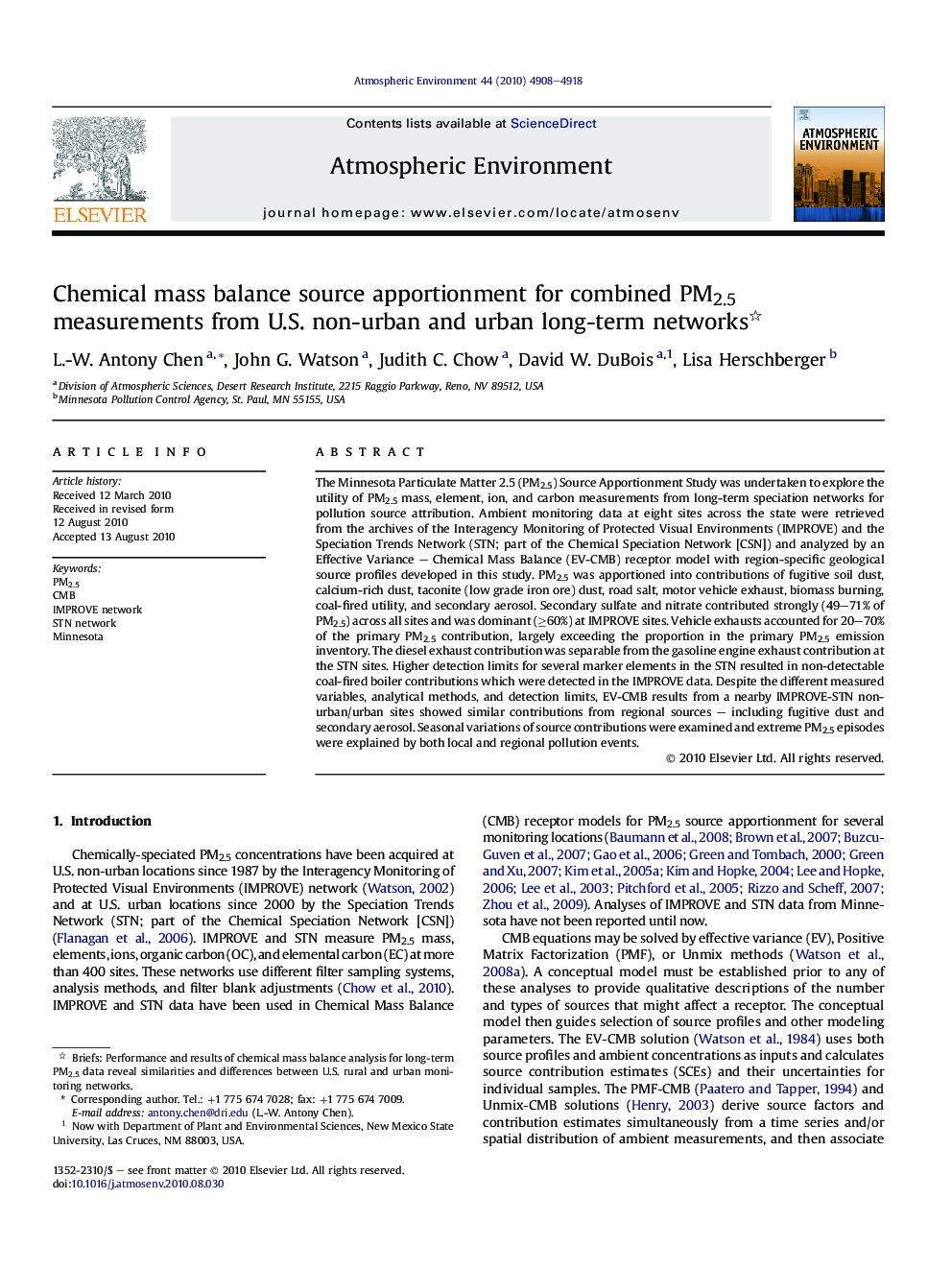| Article ID | Journal | Published Year | Pages | File Type |
|---|---|---|---|---|
| 4440145 | Atmospheric Environment | 2010 | 11 Pages |
The Minnesota Particulate Matter 2.5 (PM2.5) Source Apportionment Study was undertaken to explore the utility of PM2.5 mass, element, ion, and carbon measurements from long-term speciation networks for pollution source attribution. Ambient monitoring data at eight sites across the state were retrieved from the archives of the Interagency Monitoring of Protected Visual Environments (IMPROVE) and the Speciation Trends Network (STN; part of the Chemical Speciation Network [CSN]) and analyzed by an Effective Variance – Chemical Mass Balance (EV-CMB) receptor model with region-specific geological source profiles developed in this study. PM2.5 was apportioned into contributions of fugitive soil dust, calcium-rich dust, taconite (low grade iron ore) dust, road salt, motor vehicle exhaust, biomass burning, coal-fired utility, and secondary aerosol. Secondary sulfate and nitrate contributed strongly (49–71% of PM2.5) across all sites and was dominant (≥60%) at IMPROVE sites. Vehicle exhausts accounted for 20–70% of the primary PM2.5 contribution, largely exceeding the proportion in the primary PM2.5 emission inventory. The diesel exhaust contribution was separable from the gasoline engine exhaust contribution at the STN sites. Higher detection limits for several marker elements in the STN resulted in non-detectable coal-fired boiler contributions which were detected in the IMPROVE data. Despite the different measured variables, analytical methods, and detection limits, EV-CMB results from a nearby IMPROVE-STN non-urban/urban sites showed similar contributions from regional sources – including fugitive dust and secondary aerosol. Seasonal variations of source contributions were examined and extreme PM2.5 episodes were explained by both local and regional pollution events.
